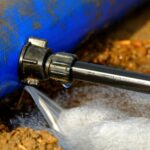Are you worried that your home’s air quality is impacting your health? One study found that poor indoor air quality can lower a newborn’s birth weight. Poor air quality can lead to coughing, wheezing, and dizziness in adults.
With poor heating, cooling, and ventilation, many homes experience poor indoor air quality. How often should you test indoor air quality? And how will you know if your air quality is poor?
Let’s explore everything you need to know as we guide you through indoor air quality testing and why you should test your indoor air.
Factors Affecting Indoor Air Quality
Testing your indoor air quality (IAQ) is essential for understanding the air quality you breathe. It can help you to identify potential problems, so you can take steps to mitigate them. The frequency of testing depends on several factors, such as:
- the age of the property
- the type of heating and cooling system
- the activity that takes place in the area
How Often Should You Test Indoor Air Quality?
The frequency of IAQ testing depends on several factors, such as the home or building size, number of occupants, and building use. Generally, you should test indoor air quality at least once a year. However, there are specific situations where more frequent testing may be necessary.
Aging Infrastructure
Homes and buildings with aging infrastructure, such as older HVAC systems, may require more frequent IAQ testing. Aging infrastructure can result in poor ventilation, air filtration, and IAQ.
Properties with older or outdated furnaces may also require furnace cleaning and frequent IAQ testing. Older furnaces may not be as efficient or release more air pollutants than newer ones, which can contribute to poor IAQ and affect the health of occupants.
Recent Renovations or Construction
Testing IAQ before and after any construction or renovation activities is essential. Construction activities can release high dust, chemicals, and air pollutants. Testing after completion can ensure the air is safe to breathe and that you remove any contaminants adequately.
New Occupancy or Change in Building Use
Testing IAQ is crucial before occupancy begins, especially for buildings with new occupancy or being used for different purposes. It can identify potential IAQ issues and ensure the air is safe.
Suspected Contamination
Immediate IAQ testing is essential if there is suspected contamination in a property, such as a mold or asbestos. The testing can help identify the extent of contamination and ensure you take proper remediation measures.
Methods of Indoor Air Quality Testing
There are several methods available for testing indoor air quality (IAQ). The most common methods include the following:
- air sampling
- surface sampling
- monitoring
- questionnaires
Each method has its advantages and disadvantages, and the choice of method depends on the specific IAQ problem and the resources available for testing.
Keep Your Family Safe Today
Taking IAQ testing is necessary to keep you, your family, and your home safe. Knowing how often to test indoor air quality can be tricky, but you should do it at least twice a year. Remember that testing is one of the most critical steps to ensuring your indoor air is safe and clean!
Contact a professional today for help with testing and making your home healthy.
For more helpful articles like this one, visit the rest of our blog today!




